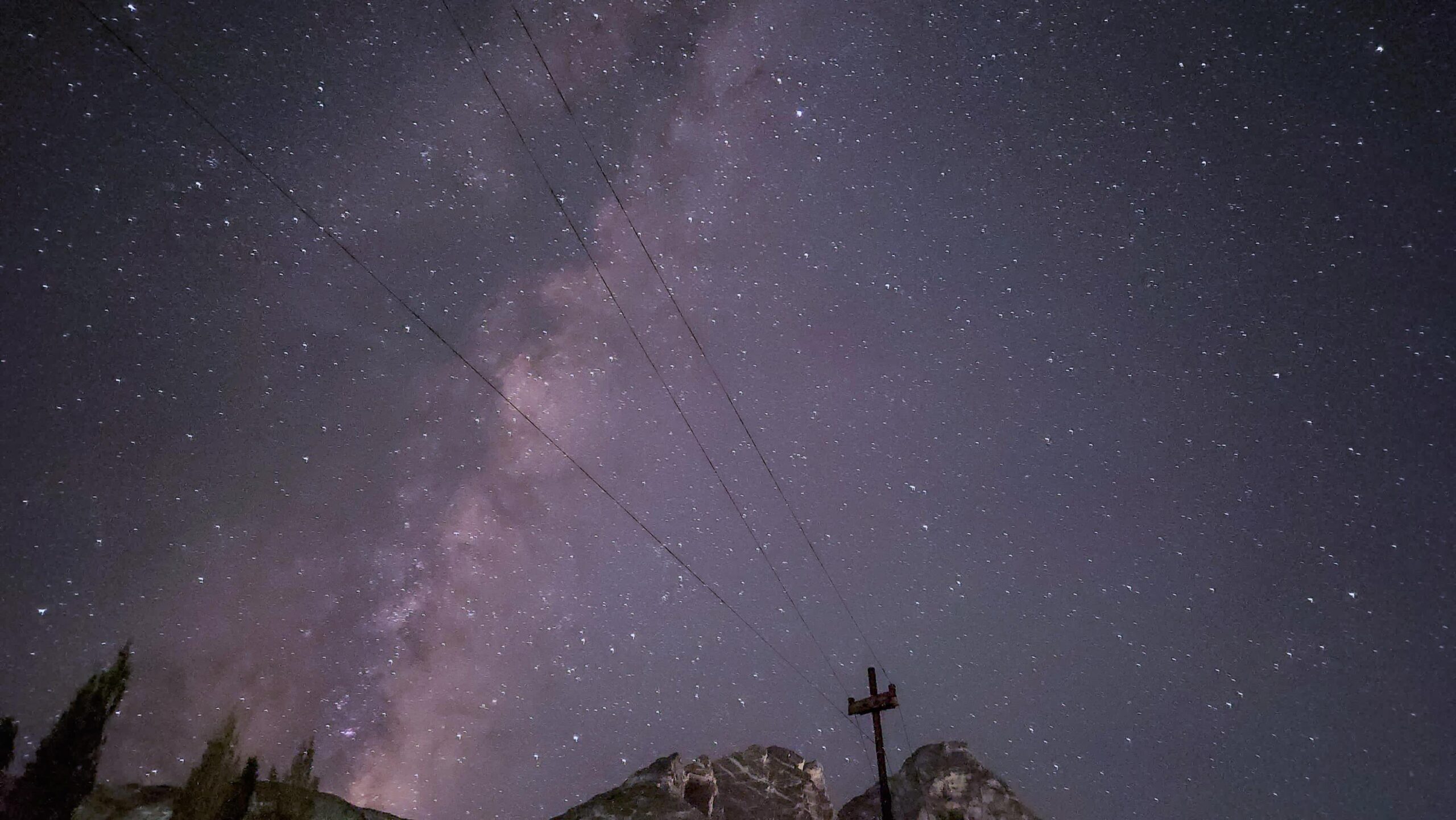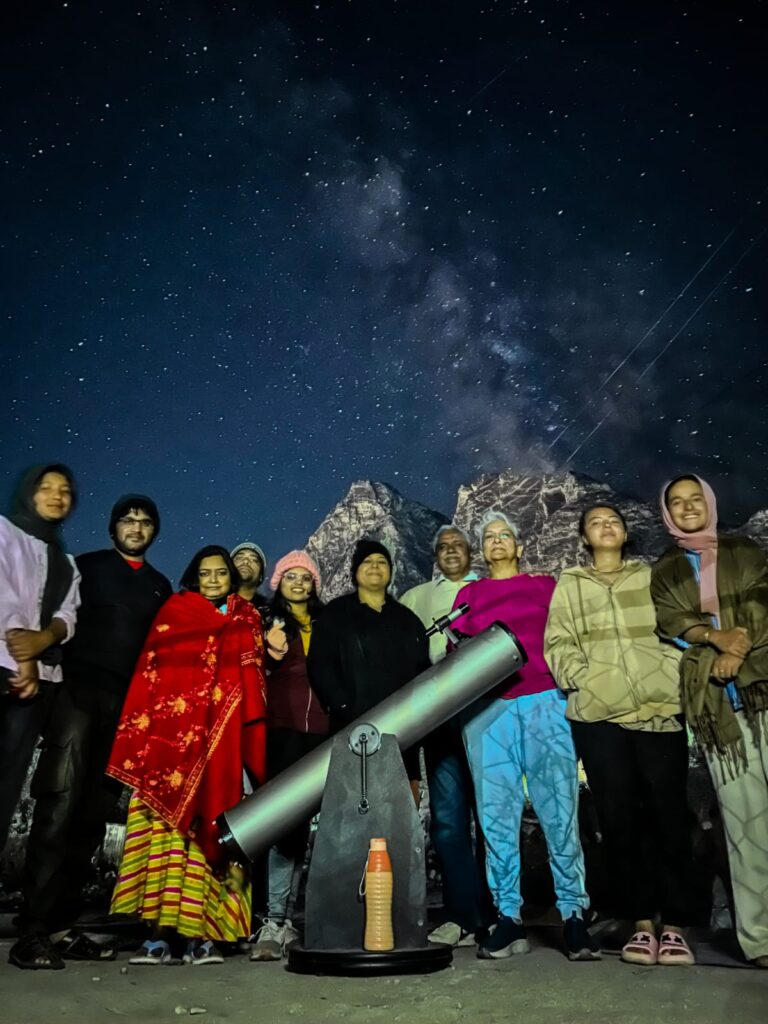Stargazing is a magical way to connect with the universe, and India offers some of the best locations for this celestial experience. With clear skies, low light pollution, and high altitudes, these destinations are perfect for witnessing the wonders of the cosmos. Here’s a detailed guide, including how to reach these locations and the importance of dark skies.
Top Stargazing Destinations in India: A Complete Guide
Why Are Dark Skies Important for Stargazing?
Dark skies, free from light pollution, are essential for stargazing. They provide:
Clearer Visibility:
Fainter celestial objects like the Milky Way, nebulae, and distant galaxies become visible.
Astronomical Observations:
Ideal conditions for astrophotography and observing rare celestial phenomena.
Preservation of Nature:
Dark skies contribute to the well-being of nocturnal wildlife and the natural ecosystem.
Connection with Nature:
Stargazing fosters a sense of wonder and helps us reconnect with the universe.
1. Hanle, Ladakh: A Stargazer’s Paradise

Image credit: Indian Astronomical Observatory (IAO),
Why Hanle is Unique for Stargazing?
Location & Altitude:
Situated at an altitude of 4,500m in the Changthang region of Ladakh, Hanle boasts one of the clearest skies in the world.
Minimal Light Pollution:
Being a remote village with a sparse population, Hanle has near-zero light pollution, making it one of the darkest places in India.
Astronomical Importance:
Home to the Indian Astronomical Observatory (IAO), managed by the Indian Institute of Astrophysics.
The observatory houses the High-Altitude Gamma-Ray Telescope (HAGAR) and the 2-meter Himalayan Chandra Telescope, which are instrumental in observing distant celestial bodies.
Hanle is considered ideal for global astronomical research due to over 250 clear nights annually.
First Dark Sky Reserve in India: Hanle was declared as India’s first Dark Sky Reserve, aimed at promoting sustainable astro tourism while preserving its pristine night skies.
Stargazing Experiences
Astrophotography Heaven: Capture the Milky Way, Andromeda Galaxy, and shooting stars with unparalleled clarity.
Meteor Showers: Hanle provides a breathtaking view of annual meteor showers like the Geminids and Perseids.

Image credit: Axsx Team
Other Attractions in Hanle
Hanle Monastery:
A 17th-century monastery, part of the Tibetan Buddhist lineage.
Offers stunning panoramic views of the valley.
Changthang Wildlife: Spot the elusive Kiang (Tibetan wild ass), snow leopards, and black-necked cranes. The wetlands around Hanle support rare bird species.
Umling La Pass: The world’s highest motorable road at 19,024 feet. A challenging yet rewarding journey with jaw-dropping views.

Image credit: GMRT OBSERVATORY, PUNE
Quick Facts about Hanle
Temperature:
Summers: A pleasant 10°C to 15°C. :
Summers: Winters: Harsh and freezing, dropping to -20°C or lower. :
Travel Tip: Acclimatization is crucial before visiting due to the high altitude. Spend a day or two in Leh to adapt.
Best Time to Visit
Summer (May to September): Clear skies and mild temperatures make it ideal for stargazing and exploration.
Winter (October to March): Crystal-clear nights but extreme cold; perfect for seasoned travelers and astrophotographers.
How to Reach:
By Air: Fly to Kushok Bakula Rimpochee Airport, Leh. Hanle is a 9-hour drive from Leh.
By Road: Leh can be accessed via Manali-Leh or Srinagar-Leh highways. From Leh, hire a cab to Hanle.
By Train: The closest railway station is Jammu Tawi (700 km from Leh).
Hanle is not just a destination—it’s an experience that connects you with the universe in ways few places can.
2. Nubra Valley, Ladakh: A Hidden Stargazing Gem
Why Nubra Valley is Great for Stargazing
Location & Altitude: Nestled at an altitude of 10,000 ft above sea level, Nubra Valley is surrounded by the majestic Karakoram and Ladakh mountain ranges, providing a perfect backdrop for stargazing.
Dark Skies: Far from city lights, the valley offers minimal light pollution, creating excellent conditions for viewing constellations, planets, and the Milky Way.
Weather: The dry climate ensures clear skies for most of the year, making Nubra Valley an ideal destination for astrophotographers and stargazers.
Why Nubra Valley is Great for Stargazing
Panoramic Night Views: Experience the Milky Way arching over sand dunes and the silhouettes of rugged mountains.
Astrophotography Hotspots: Popular locations like Hunder Sand Dunes and Diskit Monastery provide striking foregrounds for star-filled skies.

Image credit: Axsx Team
Other Attractions in Nubra Valley
Hunder Sand Dunes: The cold desert of Nubra is a unique landscape where you can enjoy camel rides on double-humped Bactrian camels. At night, the dunes become a tranquil spot for stargazing.
Diskit Monastery: Famous for its giant 32-meter-high Maitreya Buddha statue. A serene place to meditate during the day and stargaze at night.
Turtuk Village: A charming Balti village close to the Indo-Pak border. Known for apricot orchards, it also offers dark skies for an intimate stargazing experience.
Siachen Base Camp Excursion: While access is limited, the nearby region offers stark landscapes and incredible views of the night sky.
Quick Facts About Nubra Valley
Access Point: Reach via the Khardung La Pass, one of the highest motorable passes in the world.
Geography: Known as the “Valley of Flowers” in the summer due to its vibrant flora despite being an arid region.
Temperature:
Summer: 20°C to 30°C during the day and cool at night.
Winter: Sub-zero temperatures, with skies still remarkably clear.
Best Time to Visit
Summer (May to September): Comfortable weather with long, clear nights ideal for stargazing.
Winter (October to March): The skies are even clearer, but the cold is harsh and travel routes can be challenging.
Travel Tips for Stargazing in Nubra Valley
Acclimatize in Leh: Spend at least a couple of days in Leh to avoid altitude sickness.
Stay Options: Opt for camps near Hunder or guesthouses in Diskit for the best stargazing views.
Gear Up: Carry warm clothing, a telescope, or binoculars, and use star-mapping apps like Stellarium for guided observations.
Nubra Valley offers a magical combination of celestial beauty and terrestrial wonders. From its surreal landscapes to its pristine night skies, it’s a must-visit for every stargazing enthusiast.
9. Madras Observatory, Chennai, Tamil Nadu:
With a history dating back to the 18th century, the Madras Observatory is one of the oldest in India. Although now primarily a historical site, it symbolizes India’s early contributions to astronomy.

Image credit: Madras Observatory,
10. Ooty Radio Telescope
Operated by the Bharatiya Chitra Sankalan Akademi (BCSA-TIFR): Situated in Ooty, Tamil Nadu, this radio telescope focuses on radio astronomy studies, including pulsars, radio galaxies, and interstellar medium research.

Image credit: Ooty Radio Telescope
Small Astronomy Observatories In India
1. NARL Observatory, Gadanki, Andhra Pradesh
Operated by the Bharatiya Chitra Sankalan Akademi (BCSA-TIFR): Situated in Ooty, Tamil Nadu, this radio telescope focuses on radio astronomy studies, including pulsars, radio galaxies, and interstellar medium research.
Known for its atmospheric studies and ionospheric research using radar techniques.
NARL carries out its research activities under seven major groups, namely, Radar Application and Development Group, Ionospheric and Space Research Group, Atmospheric Structure and Dynamics Group, Cloud and Convective Systems Group, Aerosols, Radiation and Trace Gases Group, Weather and Climate Research Group and Computers and Data Management Group
2. Udaipur Solar Observatory, Rajasthan:
Specializes in solar astronomy and operates various instruments for observing the Sun’s surface and atmosphere.
The major science goals of the solar physics research group are to understand the physics of solar oscillations, the evolution of sunspots, sunspot fine structure, MHD processes in the solar atmosphere, coronal heating, solar eruptions and space weather prediction.
USO also conducts various outreach activities for the school students.
3. Aryabhatta Research Institute of Observational Sciences (ARIES), Devasthal, Uttarakhand:
Operated by the Aryabhatta Research Institute of Observational Sciences (ARIES): Located in Devasthal, Uttarakhand, this observatory houses a 3.6-meter optical telescope. It facilitates research in various fields, including astrophysics, stellar astronomy, and solar physics. .
4. M P Birla Institute of Fundamental Research, Mt. Abu, Rajasthan:
Engaged in optical astronomy research and public outreach activities.
5. Neutrino Observatory - Operated by the Tata Institute of Fundamental Research (TIFR):
This observatory, located in Theni district, Tamil Nadu, focuses on the study of neutrinos, elusive subatomic particles. It aims to explore neutrino oscillations and provide insights into particle physics and astrophysics.
These ground-based observatories contribute significantly to scientific research and enable space scientists to study various astronomical phenomena, They play a crucial role in advancing our understanding of the universe and addressing key questions in astronomy and astrophysics.
Whether you’re a seasoned astronomer or an astronomy enthusiast, these observatories welcome visitors to witness the wonders of the cosmos through their telescopes and educational programs.
Discover more about these observatories and plan your journey into the cosmos with aeronautics & space exploration.
